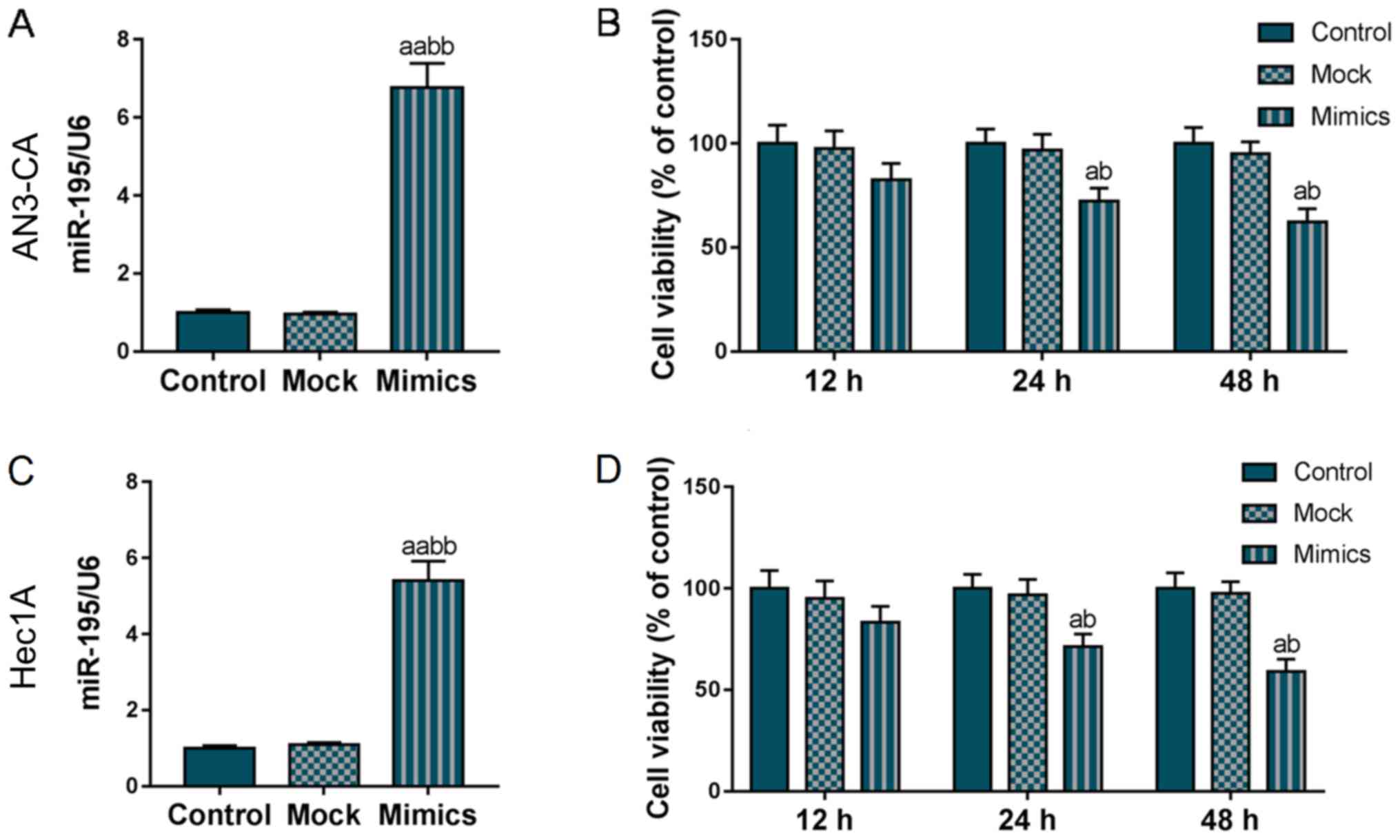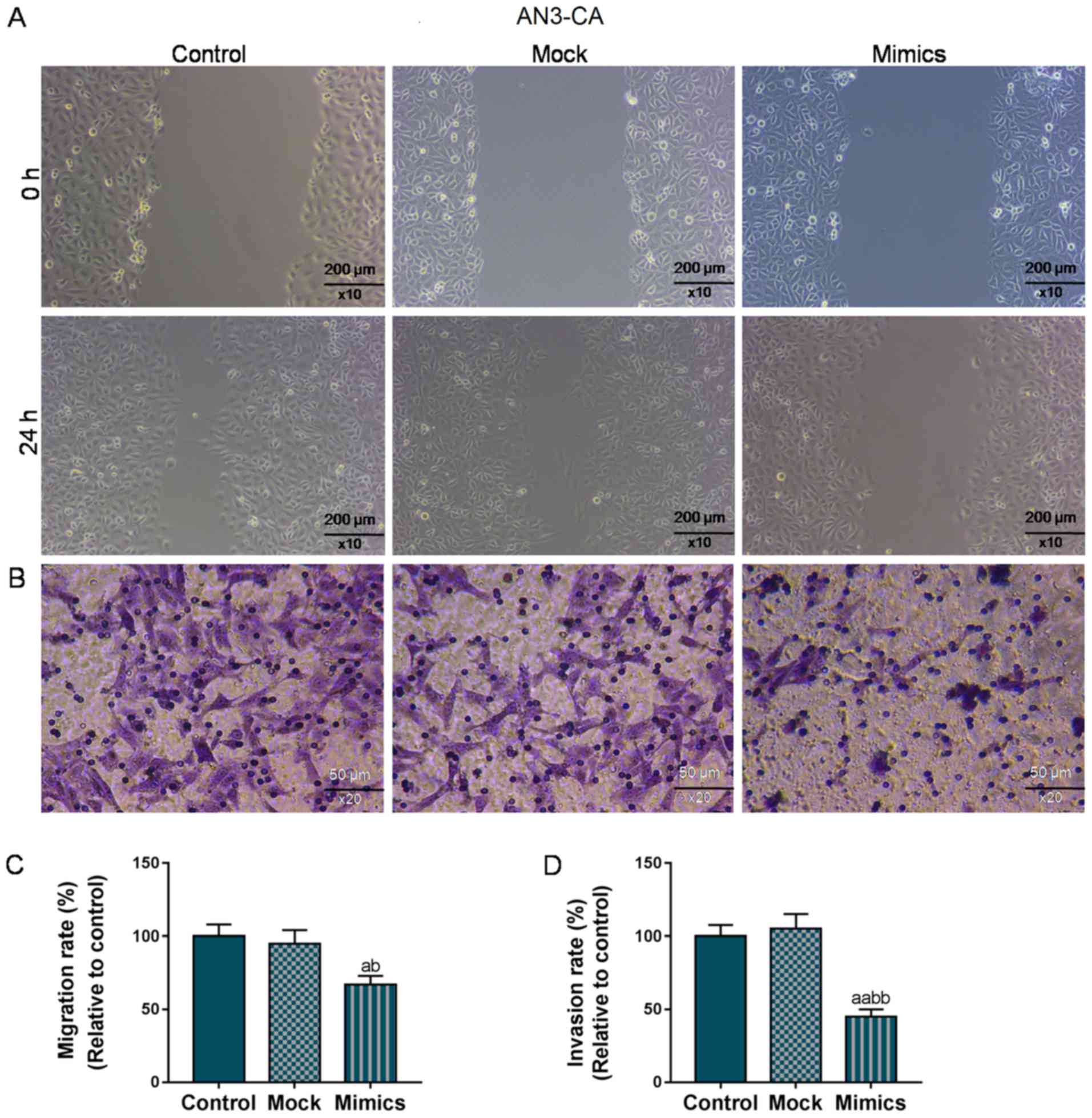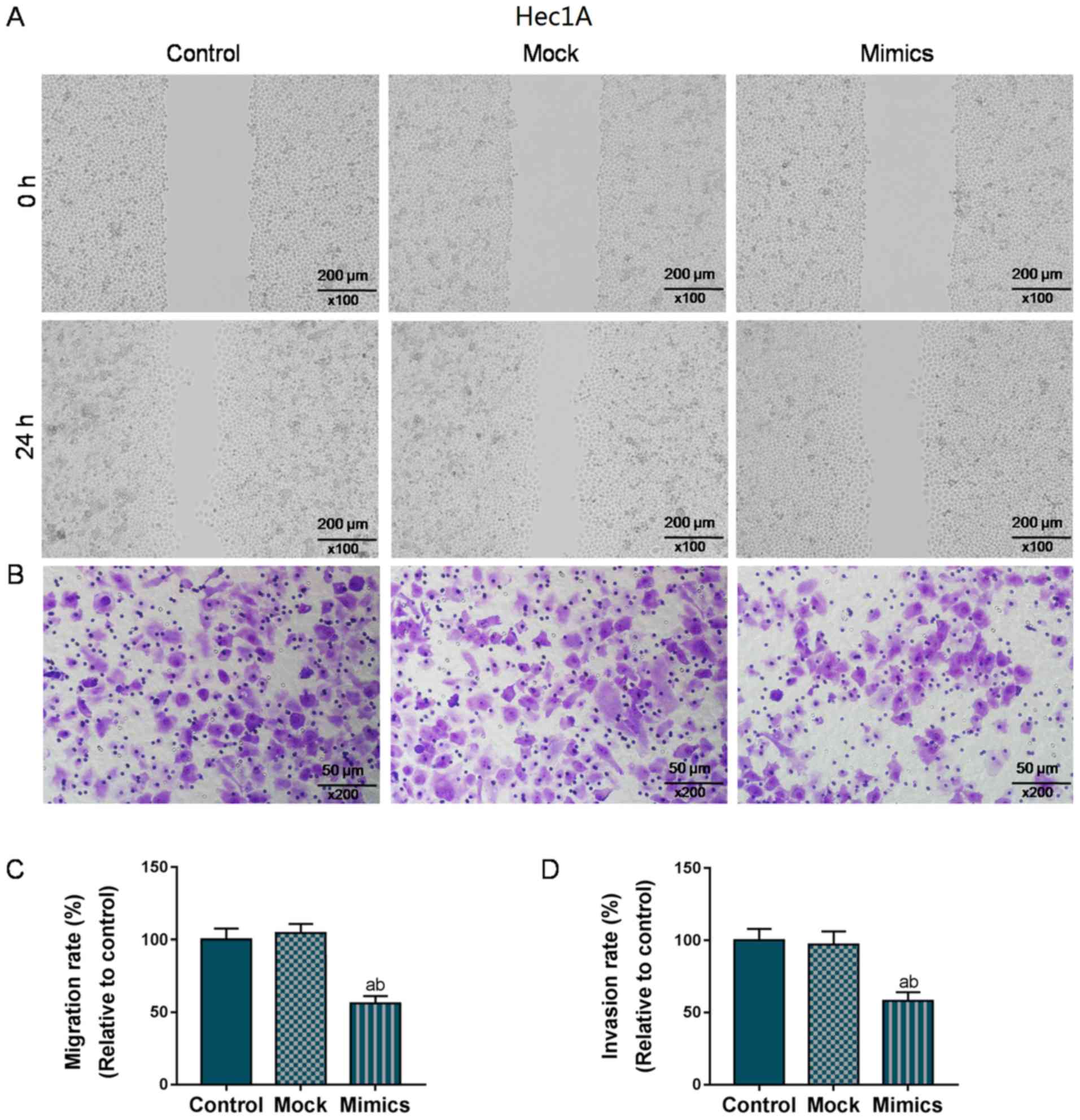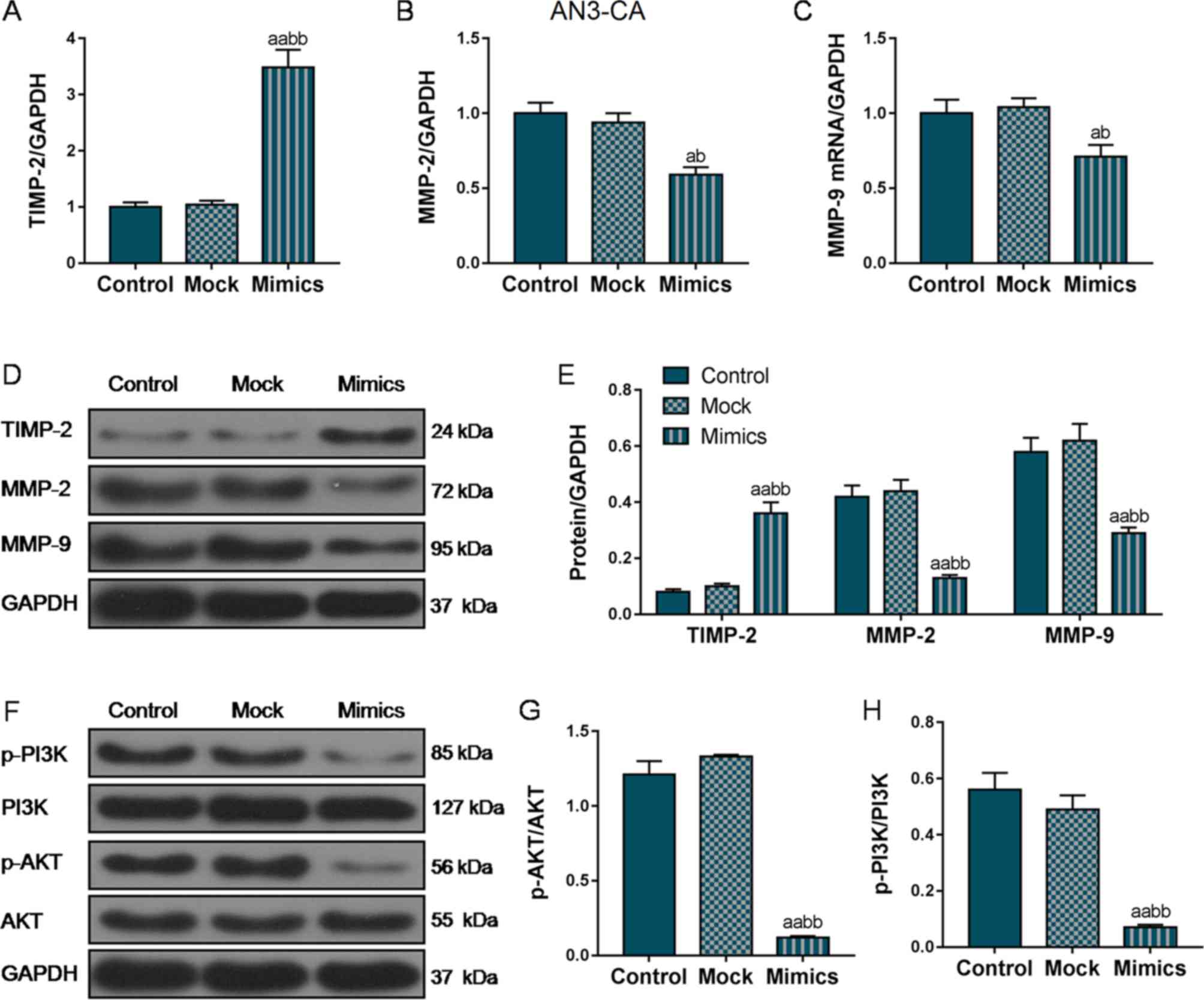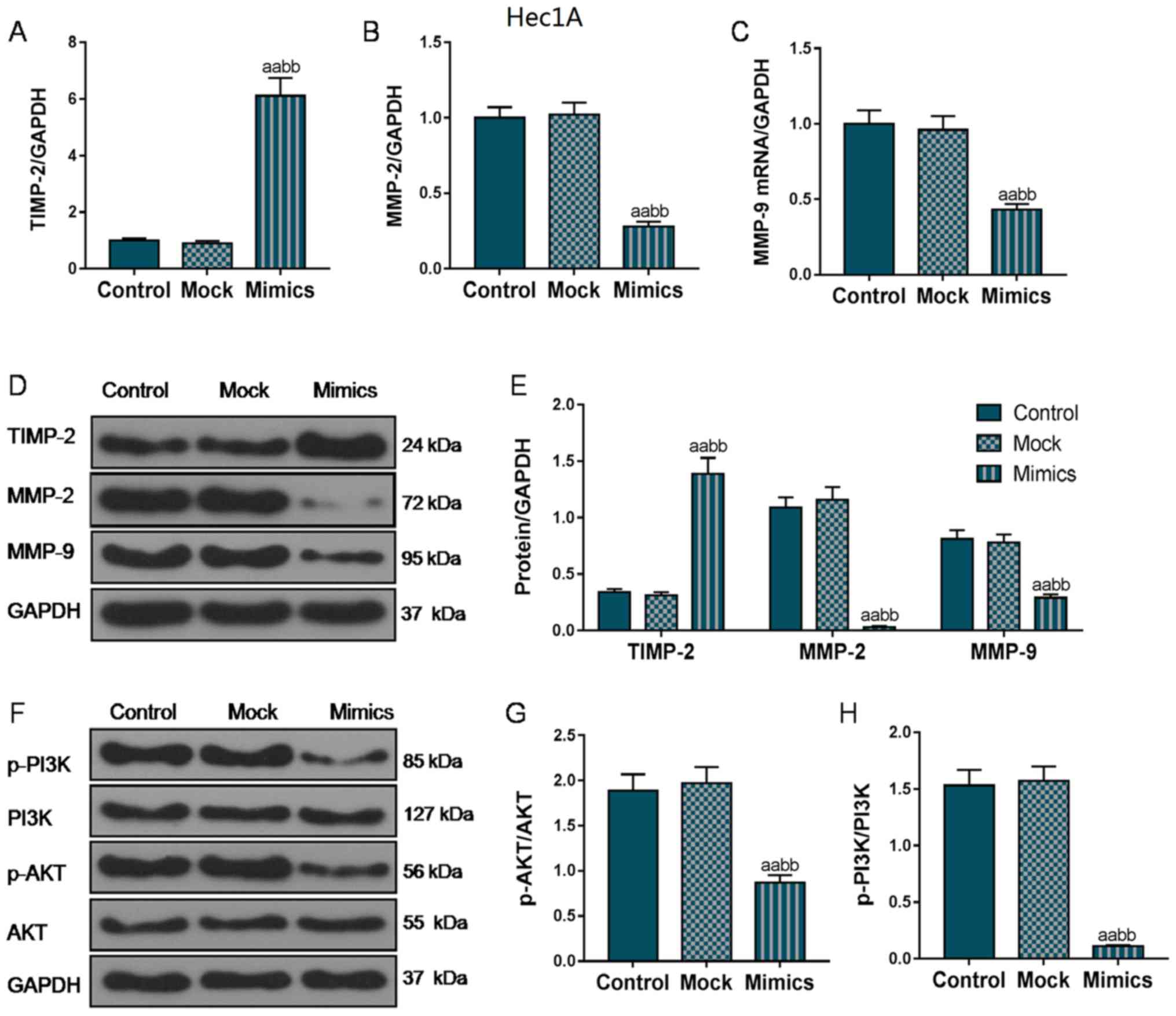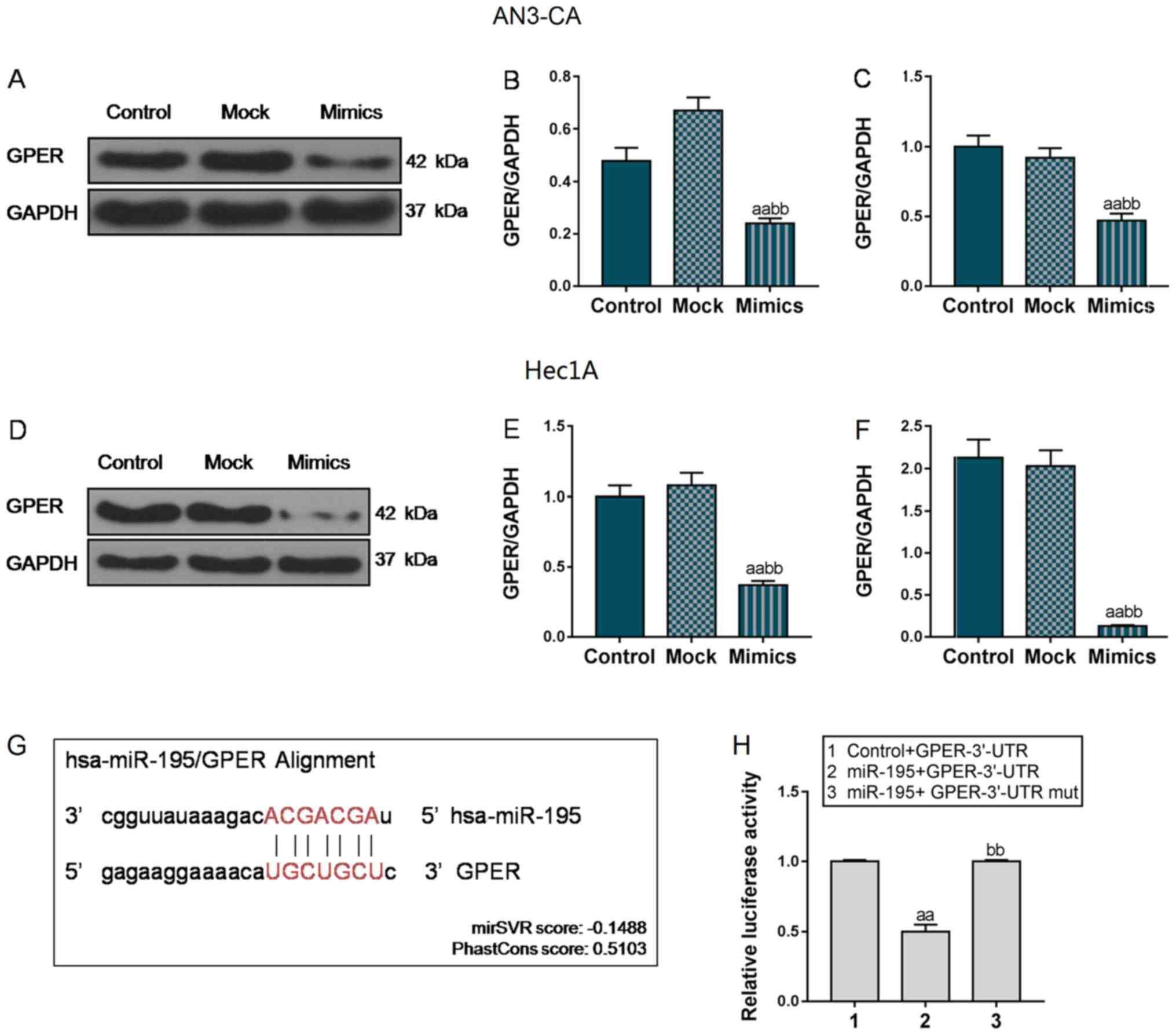|
1
|
Zhang G, Cheng Y, Zhang Q, Li X, Zhou J,
Wang J and Wei L: ATX-LPA axis facilitates estrogen-induced
endometrial cancer cell proliferation via MAPK/ERK signaling
pathway. Mol Med Rep. 17:4245–4252. 2018.PubMed/NCBI
|
|
2
|
Siegel RL, Miller KD and Jemal A: Cancer
Statistics, 2017. CA Cancer J Clin. 67:7–30. 2017. View Article : Google Scholar : PubMed/NCBI
|
|
3
|
Ward KK, Shah NR, Saenz CC, McHale MT,
Alvarez EA and Plaxe SC: Cardiovascular disease is the leading
cause of death among endometrial cancer patients. Gynecol Oncol.
126:176–179. 2012. View Article : Google Scholar : PubMed/NCBI
|
|
4
|
Elit L and Hirte H: Novel strategies for
systemic treatment of endometrial cancer. Expert Opin Investig
Drugs. 9:2831–2853. 2000. View Article : Google Scholar : PubMed/NCBI
|
|
5
|
Dong P, Kaneuchi M, Konno Y, Watari H,
Sudo S and Sakuragi N: Emerging therapeutic biomarkers in
endometrial cancer. Biomed Res Int. 2013:1303622013. View Article : Google Scholar : PubMed/NCBI
|
|
6
|
Gong B, Yue Y, Wang R, Zhang Y, Jin Q and
Zhou X: Overexpression of microRNA-194 suppresses the
epithelial-mesenchymal transition in targeting stem cell
transcription factor Sox3 in endometrial carcinoma stem cells.
Tumour Biol. 39:10104283177062172017. View Article : Google Scholar : PubMed/NCBI
|
|
7
|
Oyanadel C, Holmes C, Pardo E, Retamal C,
Shaughnessy R, Smith P, Cortés P, Bravo-Zehnder M, Metz C,
Feuerhake T, et al: Galectin-8 induces partial
epithelial-mesenchymal transition with invasive tumorigenic
capabilities involving a FAK/EGFR/proteasome pathway in Madin-Darby
canine kidney cells. Mol Biol Cell. 29:557–574. 2018. View Article : Google Scholar : PubMed/NCBI
|
|
8
|
Meng X, Kong DH, Li N, Zong ZH, Liu BQ, Du
ZX, Guan Y, Cao L and Wang HQ: Knockdown of BAG3 induces
epithelial-mesenchymal transition in thyroid cancer cells through
ZEB1 activation. Cell Death Dis. 5:e10922014. View Article : Google Scholar : PubMed/NCBI
|
|
9
|
Mitra A, Mishra L and Li S: EMT, CTCs and
CSCs in tumor relapse and drug-resistance. Oncotarget.
6:10697–10711. 2015. View Article : Google Scholar : PubMed/NCBI
|
|
10
|
Huszar M, Pfeifer M, Schirmer U, Kiefel H,
Konecny GE, Ben-Arie A, Edler L, Munch M, Muller-Holzner E,
Jerabek-Klestil S, et al: Up-regulation of L1CAM is linked to loss
of hormone receptors and E-cadherin in aggressive subtypes of
endometrial carcinomas. J Pathol. 220:551–561. 2010. View Article : Google Scholar : PubMed/NCBI
|
|
11
|
Kent CN and Guttilla Reed IK: Regulation
of epithelial-mesenchymal transition in endometrial cancer:
Connecting PI3K, estrogen signaling, and microRNAs. Clin Transl
Oncol. 18:1056–1061. 2016. View Article : Google Scholar : PubMed/NCBI
|
|
12
|
Prossnitz ER and Barton M: The
G-protein-coupled estrogen receptor GPER in health and disease. Nat
Rev Endocrinol. 7:715–726. 2011. View Article : Google Scholar : PubMed/NCBI
|
|
13
|
Molina L, Figueroa CD, Bhoola KD and
Ehrenfeld P: GPER-1/GPR30 a novel estrogen receptor sited in the
cell membrane: Therapeutic coupling to breast cancer. Expert Opin
Ther Targets. 21:755–766. 2017. View Article : Google Scholar : PubMed/NCBI
|
|
14
|
Zhu P, Liao LY, Zhao TT, Mo XM, Chen GG
and Liu ZM: GPER/ERK&AKT/NF-κB pathway is involved in
cadmium-induced proliferation, invasion and migration of
GPER-positive thyroid cancer cells. Mol Cell Endocrinol. 442:68–80.
2017. View Article : Google Scholar : PubMed/NCBI
|
|
15
|
Yan Y, Jiang X, Zhao Y, Wen H and Liu G:
Role of GPER on proliferation, migration and invasion in
ligand-independent manner in human ovarian cancer cell line SKOV3.
Cell Biochem Funct. 33:552–559. 2015. View
Article : Google Scholar : PubMed/NCBI
|
|
16
|
Zhang L, Li Y, Lan L, Liu R, Wu Y, Qu Q
and Wen K: Tamoxifen has a proliferative effect in endometrial
carcinoma mediated via the GPER/EGFR/ERK/cyclin D1 pathway: A
retrospective study and an in vitro study. Mol Cell Endocrinol.
437:51–61. 2016. View Article : Google Scholar : PubMed/NCBI
|
|
17
|
Petrie WK, Dennis MK, Hu C, Dai D,
Arterburn JB, Smith HO, Hathaway HJ and Prossnitz ER: G
protein-coupled estrogen receptor-selective ligands modulate
endometrial tumor growth. Obstet Gynecol Int. 2013:4727202013.
View Article : Google Scholar : PubMed/NCBI
|
|
18
|
He YY, Cai B, Yang YX, Liu XL and Wan XP:
Estrogenic G protein-coupled receptor 30 signaling is involved in
regulation of endometrial carcinoma by promoting proliferation,
invasion potential, and interleukin-6 secretion via the MEK/ERK
mitogen-activated protein kinase pathway. Cancer Sci.
100:1051–1061. 2009. View Article : Google Scholar : PubMed/NCBI
|
|
19
|
Smith HO, Leslie KK, Singh M, Qualls CR,
Revankar CM, Joste NE and Prossnitz ER: GPR30: A novel indicator of
poor survival for endometrial carcinoma. Am J Obstet Gynecol.
196:386.e1–e9.e11. 2007. View Article : Google Scholar
|
|
20
|
Fan DX, Yang XH, Li YN and Guo L:
17β-estradiol on the expression of G-protein coupled estrogen
receptor (GPER/GPR30) mitophagy, and the PI3K/Akt signaling pathway
in ATDC5 chondrocytes in vitro. Med Sci Monit. 24:1936–1947. 2018.
View Article : Google Scholar : PubMed/NCBI
|
|
21
|
Zhang L, Zhao Y and Guo L: 17β-estradiol
protects INS-1 insulinoma cells from mitophagy via G
protein-coupled estrogen receptors and the PI3K/Akt signaling
pathway. Int J Mol Med. 41:2839–2846. 2018.PubMed/NCBI
|
|
22
|
Bhaskaran M and Mohan M: MicroRNAs:
History, biogenesis, and their evolving role in animal development
and disease. Vet Pathol. 51:759–774. 2014. View Article : Google Scholar : PubMed/NCBI
|
|
23
|
Tsukamoto O, Miura K, Mishima H, Abe S,
Kaneuchi M, Higashijima A, Miura S, Kinoshita A, Yoshiura K and
Masuzaki H: Identification of endometrioid endometrial
carcinoma-associated microRNAs in tissue and plasma. Gynecol Oncol.
132:715–721. 2014. View Article : Google Scholar : PubMed/NCBI
|
|
24
|
Livak KJ and Schmittgen TD: Analysis of
relative gene expression data using real-time quantitative PCR and
the 2(-Delta Delta C(T)) method. Methods. 25:402–408. 2001.
View Article : Google Scholar : PubMed/NCBI
|
|
25
|
Drzewiecka-Jędrzejczyk M, Wlazeł R,
Terlecka M and Jabłoński S: Serum metalloproteinase-2 and tissue
inhibitor of metalloproteinase-2 in lung carcinoma patients. J
Thorac Dis. 9:5306–5313. 2017. View Article : Google Scholar : PubMed/NCBI
|
|
26
|
Bourboulia D and Stetler-Stevenson WG:
Matrix metalloproteinases (MMPs) and tissue inhibitors of
metalloproteinases (TIMPs): Positive and negative regulators
intumor cell adhesion. Semin Cancer Biol. 20:161–168. 2010.
View Article : Google Scholar : PubMed/NCBI
|
|
27
|
Tang T, Shan G and Zeng F: Knockdown of
DGCR5 enhances the radiosensitivity of human laryngeal carcinoma
cells via inducing miR-195. J Cell Physiol. 234:12918–12925. 2019.
View Article : Google Scholar : PubMed/NCBI
|
|
28
|
Yu W, Liang X, Li X, Zhang Y, Sun Z, Liu Y
and Wang J: MicroRNA-195: A review of its role in cancers. Onco
Targets Ther. 11:7109–7123. 2018. View Article : Google Scholar : PubMed/NCBI
|
|
29
|
Zhang J and Li W: Long noncoding RNA CYTOR
sponges miR-195 to modulate proliferation, migration, invasion and
radiosensitivity in nonsmall cell lung cancer cells. Biosci Rep.
38(pii): BSR201815992018. View Article : Google Scholar : PubMed/NCBI
|
|
30
|
Wang Y, Chen H, Fu Y, Ai A, Xue S, Lyu Q
and Kuang Y: MiR-195 inhibits proliferation and growth and induces
apoptosis of endometrial stromal cells by targeting FKN. Int J Clin
Exp Pathol. 6:2824–2834. 2013.PubMed/NCBI
|
|
31
|
Kong F, Ma J, Yang H, Yang D, Wang C and
Ma X: Long non-coding RNA PVT1 promotes malignancy in human
endometrial carcinoma cells through negative regulation of
miR-195-5p. Biochim Biophys Acta Mol Cell Res. Jul 19–2018.doi:
10.1016/j.bbamcr.2018.07.008 (Epub ahead of print). View Article : Google Scholar : PubMed/NCBI
|
|
32
|
Segarra J, Balenci L, Drenth T, Maina F
and Lamballe F: Combined signaling through ERK, PI3K/AKT, and
RAC1/p38 is required for met-triggered cortical neuron migration. J
Biol Chem. 281:4771–4778. 2006. View Article : Google Scholar : PubMed/NCBI
|
|
33
|
Tian PC, Wang HL, Chen GH, Luo Q, Chen Z,
Wang Y and Liu YF: 2,2′,4,4′-Tetrabromodiphenyl ether promotes
human neuroblastoma SH-SY5Y cells migration via the GPER/PI3K/Akt
signal pathway. Hum Exp Toxicol. 35:124–134. 2016. View Article : Google Scholar : PubMed/NCBI
|
|
34
|
Ulrich LS: Endometrial cancer, types,
prognosis, female hormones and antihormones. Climacteric.
14:418–425. 2011. View Article : Google Scholar : PubMed/NCBI
|
|
35
|
Geletina NS, Kobelev VS, Babayants EV,
Feng L, Pustylnyak VO and Gulyaeva LF: PTEN negative correlates
with miR-181a in tumour tissues of non-obese endometrial cancer
patients. Gene. 655:20–24. 2018. View Article : Google Scholar : PubMed/NCBI
|
|
36
|
Yin H, Zhu Q, Liu M, Tu G, Li Q, Yuan J,
Wen S and Yang G: GPER promotes tamoxifen-resistance in ER+ breast
cancer cells by reduced Bim proteins through MAPK/Erk-TRIM2
signaling axis. Int J Oncol. 51:1191–1198. 2017. View Article : Google Scholar : PubMed/NCBI
|
|
37
|
Li Y, Birnbaumer L and Teng CT: Regulation
of ERRalpha gene expression by estrogen receptor agonists and
antagonists in SKBR3 breast cancer cells: Differential molecular
mechanisms mediated by g protein-coupled receptor GPR30/GPER-1. Mol
Endocrinol. 24:969–980. 2010. View Article : Google Scholar : PubMed/NCBI
|
|
38
|
He YY, Du GQ, Cai B, Yan Q, Zhou L, Chen
XY, Lu W, Yang YX and Wan XP: Estrogenic transmembrane receptor of
GPR30 mediates invasion and carcinogenesis by endometrial cancer
cell line RL95-2. J Cancer Res Clin Oncol. 138:775–783. 2012.
View Article : Google Scholar : PubMed/NCBI
|
|
39
|
Guan BZ, Yan RL, Huang JW, Li FL, Zhong
YX, Chen Y, Liu FN, Hu B, Huang SB and Yin LH: Activation of G
protein coupled estrogen receptor (GPER) promotes the migration of
renal cell carcinoma via the PI3K/AKT/MMP-9 signals. Cell Adh Migr.
12:109–117. 2018. View Article : Google Scholar : PubMed/NCBI
|



